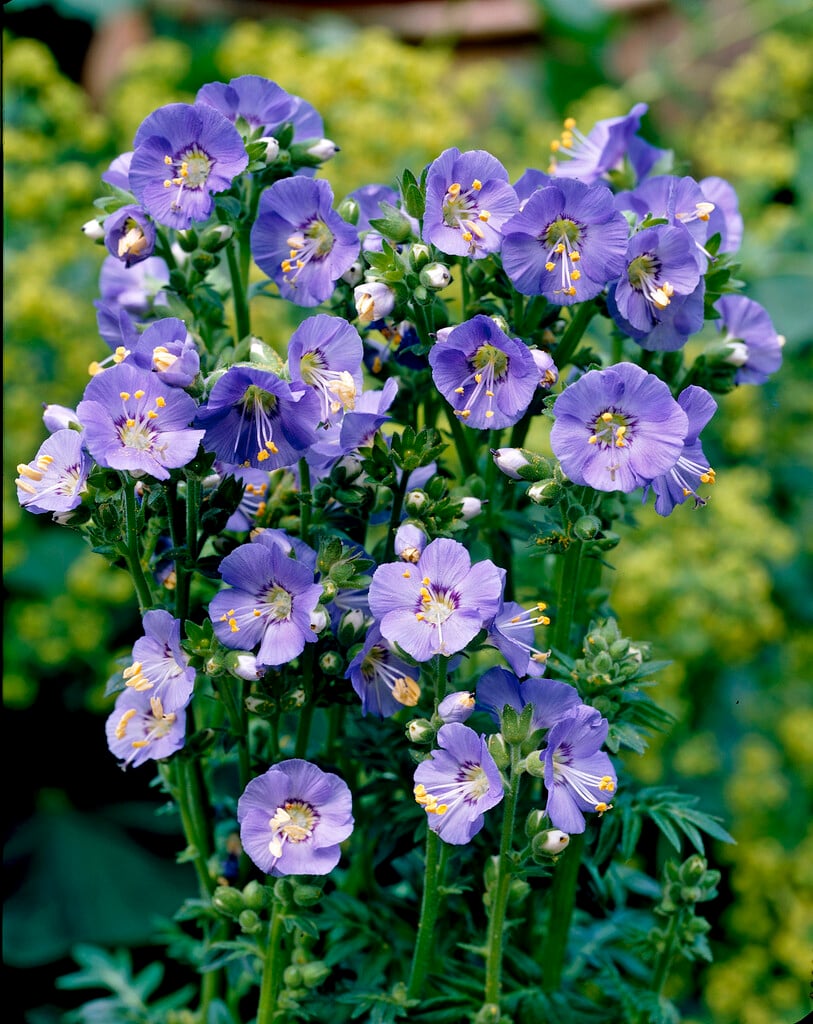Polemonium caeruleum
Jacob's ladder
A clump-forming perennial to 90cm tall, with ladder-like, pinnate mid-green leaves composed of leaflets, and stiff stems bearing sprays of blue flowers 2.5cm wide with prominent yellow stamens in early summer; often seeds about rather freely
Synonyms
Polemonium pulchellum Turcz.Size
Ultimate height
0.5–1 metresTime to ultimate height
2–5 yearsUltimate spread
0.1–0.5 metresGrowing conditions
Moisture
Moist but well–drainedpH
Acid, Alkaline, NeutralColour & scent
| Stem | Flower | Foliage | Fruit | |
| Spring | Green | |||
|---|---|---|---|---|
| Summer | Blue | Green | ||
| Autumn | ||||
| Winter |
Position
- Full sun
- Partial shade
Aspect
South–facing or North–facing or West–facing or East–facing
Exposure
Exposed or Sheltered Hardiness
H7Botanical details
- Family
- Polemoniaceae
- Native to GB / Ireland
- Yes
- Foliage
- Deciduous
- Habit
- Clump forming
- Genus
Polemonium can be annuals or herbaceous perennials or upright or spreading habit, with pinnate leaves and usually clustered, tubular, bell, or funnel-shaped flowers
- Name status
Correct
- Plant range
- Temperate Eurasia
How to grow
Cultivation
Grow in any fertile, moist but well-drained soil in full sun or partial shade
Propagation
Propagate by seed sown in containers, in a cold frame in autumn or spring, or divide in spring
Suggested planting locations and garden types
- Coastal
- Wildlife gardens
- Wildflower meadow
- City and courtyard gardens
- Cottage and informal garden
- Flower borders and beds
Pruning
No pruning required. Cut back foliage to ground level at the end of the season
Pests
Generally pest-free
Diseases
Powdery mildews can sometimes be a problem
Love gardening
Sign up to receive regular gardening tips, inspiration, offers and more
View our Privacy Policy
Get involved
The Royal Horticultural Society is the UK’s leading gardening charity. We aim to enrich everyone’s life through plants, and make the UK a greener and more beautiful place.

